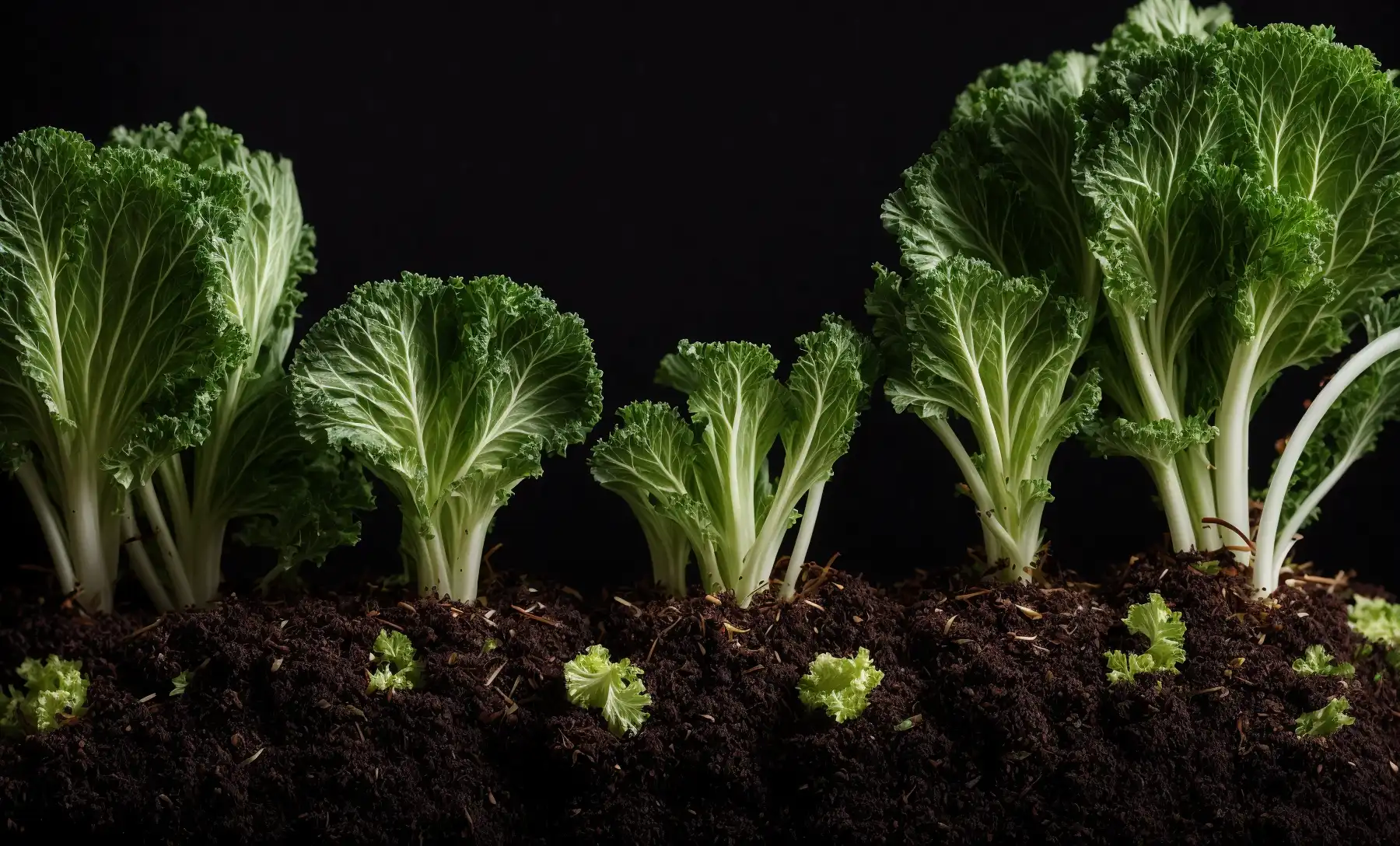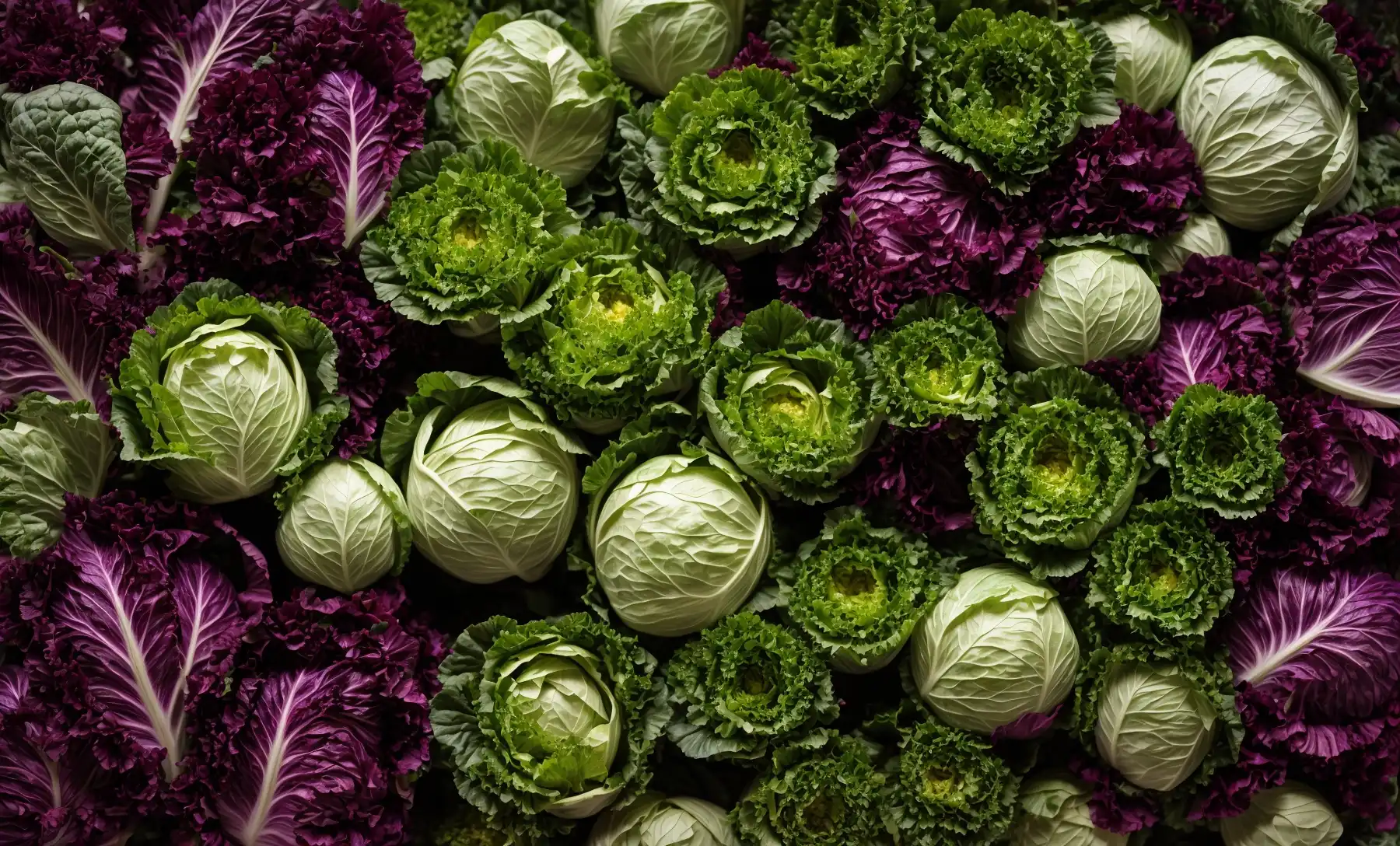Cabbage sprouts appear as small, green or purplish leaves budding from a thick, central stem. They emerge in compact rosettes indicative of their brassica family lineage.
As the gardeners’ delight and chefs’ favorite, cabbage sprouts are a sign of bountiful harvests to come. These tiny, tender plants pack a burst of nutrients and prepare to grow into the full-sized cabbages known for their versatility in the kitchen.
Carefully nurtured from seed, cabbage sprouts are the first stages of growth, a vision of greenery that hints at the lush heads to follow. Their appearance is a promise of the delicious, leafy heads that can transform into salads, stir-fries, and fermented delicacies like sauerkraut. Understanding the sprouting stage is crucial for successful cabbage cultivation, as healthy sprouts set the foundation for thriving, robust plants.
About Cabbage Sprouts
Embarking on a gardening journey brings with it the delight of witnessing the unfolding of life, right from the seed to the fruit. Among the many leafy vegetables cultivated, cabbage stands out due to its dense leaves and nutritional benefits. Particularly captivating is the early stage of the cabbage life cycle, where cabbage sprouts take center stage. Understanding what these sprouts look like not only enriches the gardening experience but also ensures a successful crop.
Exactly Cabbage Sprouts Look Like:

Overview of Cabbage Growth Cycle
From seed to harvest, the life cycle of cabbage is a marvel of nature’s orderly progression. Beginning as small seeds, cabbage enters a cycle of growth that is both predictable and visually astonishing. Below is an overview of each stage:
- Germination: Warmth and moisture coax the seeds to germinate.
- Seedling Stage: Tiny shoots emerge, displaying the first signs of life.
- Vegetative Stage: Characterized by leaf development and growth.
- Maturation: The cabbage head forms and thickens.
- Harvest: The cabbage reaches maturity and is ready for consumption.
What Are Cabbage Sprouts?
Cabbage sprouts refer to the early growth after the seeds have germinated. They are the seedlings that appear following the initial stage of the cabbage’s life cycle. Spotting cabbage sprouts involves looking for the following characteristics:
- Two embryonic leaves, also known as cotyledons, which are usually brighter green.
- Following the cotyledons, true leaves develop, which are darker and start to show the distinctive cabbage leaf texture.
Importance of Identifying Cabbage Sprouts
Correct identification of cabbage sprouts is critical for a gardener’s success. The reasons for this are multi-fold:
- Optimal Care: Recognizing sprouts ensures they receive the necessary care tailored to their growth stage.
- Disease Prevention: Early identification of sprouts can help in monitoring signs of disease or pests, enabling timely intervention.
- Weed Management: Differentiating sprouts from weeds is crucial in keeping the garden bed healthy and competition-free.
Knowledge of cabbage sprouts thus lays the foundation for a thriving cabbage patch, leading to a bountiful harvest and the joy of homegrown produce.
Visual Characteristics of Cabbage Sprouts
Gardeners and vegetable enthusiasts often marvel at the process of growth from seed to full plant. Cabbage sprouts, in particular, hold a fascinating journey that can be observed visually as they develop. Understanding and recognizing the key characteristics of these sprouts can provide insight into their health and progress, as well as the satisfaction of nurturing a plant from its very beginnings. Let us delve into the world of cabbage sprouts and explore their visual hallmarks.
Initial Appearance: Cotyledons
Most plants start their life cycle with the emergence of cotyledons, also known as seed leaves. With cabbage sprouts, these initial leaves are easy to spot. They typically present as:
- Small and round in shape,
- Smooth-edged, without the lobes often found on mature cabbage leaves,
- A rich green color hinting at healthy beginnings.
The cotyledons are a crucial part of the sprout’s development, serving as a source of nutrients before the true leaves develop.
True Leaves: Recognizing Cabbage Sprouts
Following the cotyledon stage, cabbage sprouts begin to form true leaves. These are indicators that the plant is advancing to the next phase of growth. True leaves of cabbage sprouts:
- Bear resemblance to the final shape of mature cabbage leaves,
- Are notably lobed and may have a waxy or slightly sturdy texture,
- Assume a more defined structure compared to the initial cotyledons,
- Exhibit a deeper green coloration, signaling enhanced photosynthetic activity.
Color and Texture Variations
Cabbage sprouts not only showcase changes in shape and structure but also exhibit variations in color and texture that signify their health and variety. Sprouts can display a range of greens from lighter shades to dark, vibrant hues. Texturally, the leaves might feel:
- Soft and flexible in their youth,
- Becoming increasingly robust and crisp as they mature.
These changes are normal and reflect the natural progression as the sprouts mature into sturdy, nutritious cabbages.
Size and Growth Pattern
As the cabbage sprouts grow, their size and growth pattern offer important clues about their development:
| Stage | Size | Growth Pattern |
|---|---|---|
| Seedling | 1-2 inches | Vertical growth, focusing energy on few essential leaves |
| Mature Sprout | 3-5 inches | Expanding outward to form a rosette shape, indicative of a healthy cabbage plant |
Monitoring the size and observing the growth pattern give gardeners insight into the appropriate care and spacing needed for optimal health and yield of the plants.
Stages of Cabbage Sprout Development
Embark on an enchanting journey through the life cycle of a cabbage as we explore the Stages of Cabbage Sprout Development. Be it a curious gardener or a sprout enthusiast, understanding the intricate progression from seed to sprout to flourishing cabbage plant is both enlightening and essential for a bountiful harvest. Let’s delve into each stage and uncover the remarkable transformation of this leafy green.
The Germination Stage marks the inception of life for cabbage seeds. Nestled in moist soil, they swell and burst open as a small, tender sprout emerges. This initial phase is a spectacle of nature’s wonder, with two tiny leaves, known as the cotyledons, making their first appearance. Typically, you can witness the emergence of these sprouts within 5 to 10 days post sowing.
As the sprouts gain strength, they enter the Seedling Stage. Here, one can observe the first true leaves, distinct in their slightly serrated edges, a hallmark of cabbage foliage. These initial leaves seek sunlight, providing energy for the young plant. Strong roots develop underground, grasping the earth and absorbing vital nutrients.
- First True Leaves: They emerge after the cotyledons, featuring the classic cabbage leaf shape.
- Root Development: A robust root system forms to anchor the plant and intake water and nutrients.
Following the seedling phase, cabbage plants embark on the Transition to Mature Cabbage Plant phase. During this period, the true leaves broaden and multiply, forming a dense rosette. The plant’s height and girth expand significantly as it prepares to develop a tight, round head, the centerpiece of the cabbage. This stage can span several weeks and is a testament to the plant’s endurance and gradual maturation.
Successful cabbage growth hinges on a myriad of Factors Influencing Sprout Development. Soil quality, water availability, temperature, and light exposure are pivotal components. Appropriate nutrients, such as nitrogen, phosphorus, and potassium, are crucial for vigorous growth. Additionally, warding off pests and mitigating diseases fortify the plant’s vitality.
| Factor | Impact on Development |
|---|---|
| Soil Quality | Rich, well-draining soil supports robust root growth. |
| Water Availability | Consistent moisture nurtures sprout and leaf development. |
| Temperature | Ideal temperatures between 60°F and 70°F (15°C to 21°C) encourage sprouting. |
| Light Exposure | Sufficient sunlight stimulates photosynthesis and growth. |
Caring for Cabbage Sprouts
Gardening enthusiasts, rejoice as the journey of nurturing cabbage sprouts is as rewarding as it is fascinating. Caring for Cabbage Sprouts is essential for ensuring these tiny seedlings burgeon into robust, mature heads of cabbage. From the moment those first delicate shoots break through the soil, your attentiveness to their growing conditions, nutritional needs, and protection from pests and diseases will directly impact their growth and your eventual harvest.
Optimal Growing Conditions
For cabbage sprouts to thrive, replicating their preferred habitat is crucial. Ideally, these sprouts flourish in cool temperatures ranging from 60 to 65 degrees Fahrenheit during the day and slightly cooler at night. A growing location that offers full sun to partial shade is best, as prolonged exposure to high temperatures can stunt growth or trigger early bolting. Maintain a soil pH between 6.5 and 6.8, which is slightly acidic, to optimize nutrient absorption.
Watering and Nutrient Requirements
Cabbage sprouts have particular watering and feeding needs. Consistent moisture is key, so aim to keep the soil evenly moist without overwatering, which can lead to root rot. A regular watering schedule, providing about 1.5 inches of water weekly, either from rainfall or manual watering, typically suffices. On the nutrient front, a balanced slow-release fertilizer applied at planting and periodically throughout the growing season becomes fundamental to nourish your growing sprouts.
Protecting Sprouts from Pests and Diseases
In pursuit of a bumper cabbage crop, defending against pests and diseases is paramount. Employ netting or row covers to shield sprouts from common marauders like cabbage worms and aphids. Practice crop rotation and never plant cabbages in the same spot successively, as this can invite disease. Apply organic pesticides judiciously to combat infestations, and encourage beneficial insects that naturally keep pest populations in check by planting companion flowers.
Thinning and Transplanting Cabbage Sprouts
As sprouts grow, thinning ensures each plant has sufficient space to mature. Remove weaker seedlings, leaving the strongest to continue their growth. When plants have 3 to 4 true leaves, they may be ready for transplanting. Gently relocate sprouts to their final growing positions, spacing them about 12 to 24 inches apart, depending on the cabbage variety. Consider transplanting on a cool, cloudy day or in the late afternoon to reduce transplant shock.
Also know: How Much Salt for 5 Pounds of Cabbage
Conclusion
Identifying cabbage sprouts is straightforward once you know what to seek. These tiny greens boast telltale features: a vibrant color palette and a peppering of tender leaves. Whether for a novice gardener or an experienced grower, recognizing them is a rewarding step toward a successful crop.
Embrace your gardening journey, keenly anticipating the lush bounty your cabbage sprouts will soon yield. Your green journey is incomplete without cabbages. Stay tuned to Farm Pioneer for our enriching Cabbage section, where every article is a new discovery.
